Take a drive across Sardinia, a small island located west of Italy in the Mediterranean Sea, and you will, without a doubt, look across the landscape and see heaps of stones that, at first glance, appear to be formed by nature.
And that is exactly how I viewed them. I saw piles of rocks without really seeing them!
I had traveled across Sardinia on more than one occasion on business, but this time, my associate and I, who both had an interest in archeology, decided to take a closer look.

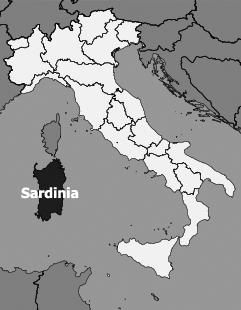
About halfway to Olbia, we stopped at what is called the Nuraghe at Losa. At a distance, it looked like a cylinder in a field. However, as we were approaching the rock form, we could see more and more details. In fact, it was a huge structure made of giant boulders.
The most impressive sight of all was the cupola that had a ceiling that rose high above us. Yes, there are many structures with high ceilings, but what amazed us the most was that no binding materials, such as concrete, were used in its construction.
Of course, I took some photos, but I also decided there and then to return and make a photo book of the nuraghes.

A Bit of History
Throughout time, civilizations have left structural artifacts on which archeologists ponder—when were they built, how were they built, why were they built, for what purpose were they used? The nuraghi or nurahges (plural) are no different—around 6500 nuraghes exist today.
The scientists can research, they can guess, they can discuss, and they can agree or disagree, but they have few concrete answers.
They do agree that these stone edifices, which only exist in Sardinia, were built approximately 3-4000 years ago during the Bronze Age and they were architectural wonders for their time.

Nuraghe, maybe derived from the Phoenician word nur meaning stone, has come to mean a hollow construction or a hollow heap of stones. And that they are! Some are singular conical towers, while others are more complex with multiple towers, but all are built without a foundation and with an interior cavity.
They are constructed of huge curved or rounded natural stones that are stacked on top of each other and it is the weight of these stones that have kept them in place for thousands of years.
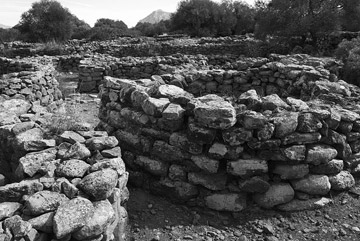
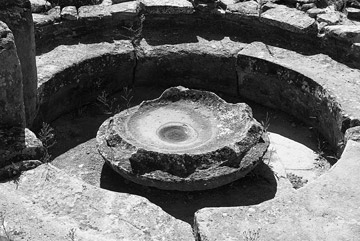
A Photo Adventure
I utilized the services of a local guide, Paola, who took care of all the details like finding places to stay and eat in addition to finding the nuraghes. She was a perfect fit for me, as she let me spend my time solely on photography. Be sure to check around and find a guide that you feel would work well for you.

During the two weeks journey, I photographed the Tombs of Giants, mainly consisting of a long, narrow burial chamber made of giant boulders and even more giant, vertical boulders at the entrance.
The vertical stone directly in front of the burial chamber has a hemispheric-shaped hole leading to the burial chamber. I also photographed Domus di Janas (houses of fairies), which are caves made by man and used as graves.
Moreover, the only ziggurath (a sort of elongated pyramid with a huge flat roof) outside the Middle East and dolmens (graves consisting of at least three vertical stones supporting a horizontal capstone acting as a roof) can be found in Sardinia. All these structures have the generic name megalithic structures, meaning giant stone monuments in Greek.

Other impressive stone buildings left by the Nuragic people (archeologists have given them that name, though they are not sure if they were called that) are the holy wells.
Some of the them are made of slightly circular-shaped stones forming a hollow cylinder below ground with a stair leading down to the well, while the simplest ones consist of a little wall with a hole and floor at the base of the wall.
The photo below shows a small part of a construction which was used both as a temple and a holy well. Archeologists know this because votive offerings consisting of several types of bronze figures have been found here.

I suppose Sardinia was as dry in the Bronze age as it is now, and that water was really precious. Wells exquisitely made by dry stone-walling can be found all across Sardinia and several of them have been restored and are well worth seeing.
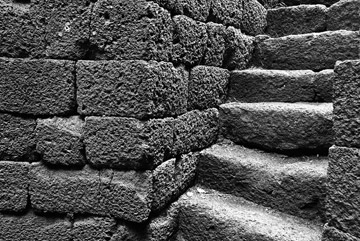
© 2011 John Tollefsen. All rights reserved.
Holy well in the nuragic sanctuary
Santa Vittoria, Serri, Cagliari
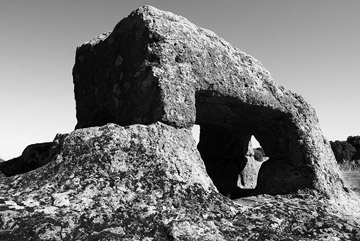
© 2011 John Tollefsen. All rights reserved.
Ox statue at Sant’Andrea Priu,
Bonorva, Sassari
For anyone who wants to photograph megalithic monuments in Sardinia, here are a few suggestions to help make it a memorable photo adventure.
~ Do bring a camera with a spare battery and a spare memory card.
~ Do bring a tripod and use it often, both to compose photos and to stabilize the camera in low-light conditions.
~ Do bring a PC and an external hard disk. I had hoped to make back-ups using high-speed internet at B&Bs,
but this was not possible.
~ Do bring shorts in order to move around easily and a sun hat, both to protect your head against the heat and
your eyes against the strong light.
~ Do be patient since lots of tourists want to see the megalithic monuments.
~ Do bring warm clothes and a rain coat since it can rain heavily.
~ Don’t take any chances. It’s very easy to be so taken with photography that you forget that a fall can be
fatal.

© 2011 John Tollefsen. All Rights Reserved.
A row of menhirs (large upright standing stones found singularly or in groups)
in the archeological park Pranu Muteddu, Goni, Cagliari
The time in which these stone structures were built remain shrouded in a more or less impenetrable darkness, but we can at least consider them as works of art, which have to be taken care of for all time.
Do a bit of research on the web and you’ll find a lot of information about the nuraghes.
http://whc.unesco.org/en/list/833
http://www.megalithic.co.uk/index.php
by John Tollefsen

Leave a Reply